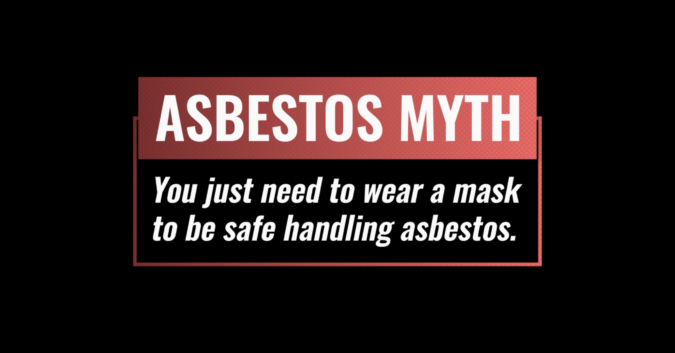Modern science has now proven that there is no safe level of asbestos exposure. However, many people believe that wearing a mask can prevent asbestos fibers from being inhaled. This is simply not true - and it's dangerous.
Because asbestos is so small and fibrous, a standard dust mask will not be sufficient for filtering airborne asbestos. Separate fact from fiction about how to handle (or let a professional handle) asbestos in your work or home.
How to Protect Yourself Around Asbestos
Asbestos experts have to take many precautions to remain safe. These precautions are so extensive that you must have a license to legally remove and handle asbestos safely. It should go without saying, but if you think you have some across asbestos, stop what you're doing and immediately call your local asbestos expert to safely remove the material. Asbestos abatement is not a DIY job.
Asbestos abatement professionals not only have to wear a respirator and protective boots and glasses, but also have to wear disposable coveralls to prevent asbestos fibers from sticking to their clothes. The fibers in asbestos can attach themselves to the threads of typical clothes and standard washing machines are not capable of decontaminating them. In fact, other clothes washed in the same load of laundry as contaminated clothes can also become contaminated.
After leaving the work site, professionals must immediately wash all of their protective layers or dispose of the outer layers as contaminated materials. Then, they immediately shower to wash away any fibers that may be on the skin or in the hair. All of these steps help prevent asbestos from contaminating more areas than where it's located.
Sound intense? It is. And it's exactly why we're raising awareness about the dangers of this material.
Remember: there is no safe level of asbestos exposure. It only takes one asbestos fiber being inhaled or ingested for you to be put at risk.
Show Your Support Online
As we wrap up Global Asbestos Awareness Week 2021, you can still continue to support the cause by sharing information online, donating money to research, and advocating for victims. Together we can hold negligent manufacturers accountable for causing harm to thousands of victims.
